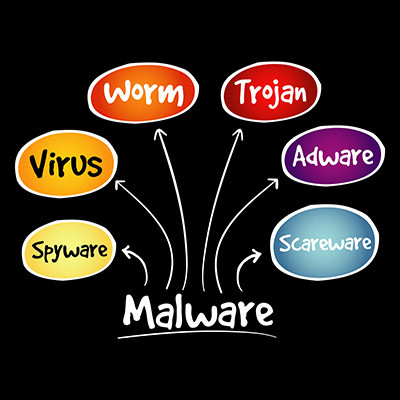Directive Blogs
Ransomware Isn’t the Only Malware You Need to Know
Network security could mean any number of things, but more often than not, people are using the term as a blanket statement against the dreaded idea of malware and its many forms. Today, we are discussing how vast the world of malware can be and how often you might find yourself misunderstanding what it exactly is. Knowing all this can help you identify if you have become a malware victim or not.
First, What Exactly Is Malware?
The problem with malware is that there are so many variants that it can be challenging to understand what it is at a base level without jumping to conclusions based on the most popular types, like ransomware. Malware is malicious code that is deployed with the intention of causing negative effects on your network infrastructure. Most threats are deployed through phishing attacks, where scammers use manipulation to gain access to an endpoint and access the infrastructure through the compromised machine. Here are some of the most common types of malware you might encounter.
Computer Virus
Computer viruses can corrupt data, reformat hard drives, and potentially even shut down systems entirely. They are nothing new, but they are still bothersome, as they can be used for even more nefarious purposes like stealing data, bogging down computers and networks, and even creating botnets.
Worm
Worms are the most common type of malware. They are self-replicating pieces of code that can move from one system to the next. Hackers will use worms to execute other malicious code specifically because of how fast they can move.
Trojan Horse
Trojan horse threats, or “trojans” for short, enter a network under the guise of something less dangerous or scary, then unpack the real threats later on, often giving hackers access to the back end of a device. Trojans can be used to steal data, install malware, modify files, log user activity and keystrokes, the list goes on. Trojans cannot replicate on their own, so hackers often combine them with worms to create considerable network-wide issues.
Spyware
Spyware can be deployed in various ways to track user movement and browser activity. It can also be used to monitor website activity and track keystrokes, making it the preferred hands-off method for stealing credentials and harvesting sensitive information. When combined with legitimate software, spyware can be difficult to detect.
Adware
Unlike some of the others on this list, adware makes itself painfully known on a user’s device. It displays unwanted advertisements, collects data, and redirects you to sites you don’t want to visit. It can even change your browser’s settings.
Ransomware
Ransomware locks down access to files or drives located on a device, only providing access back once a ransom has been paid. Ransomware is extremely dangerous, potentially even business-ending, and it is one of the most popular threats out there in today’s modern cybercrime world. The sheer variety of ransomware types makes it exceedingly difficult to handle.
Protect Your Business
These threats will not stop their relentless assaults, so you need to do what you can to protect your business now before it’s too late. Most security tools have multi-layered strategies that can prevent ransomware infections, like firewalls, antivirus, anti-malware tools, spam filtering, content filtering, software patch management, and even monitoring. With the right tools of the trade, you can protect your business the way it must be.
Directive can help you implement the right solutions for the job. To learn more, reach out to us at 607-433-2200.



Comments